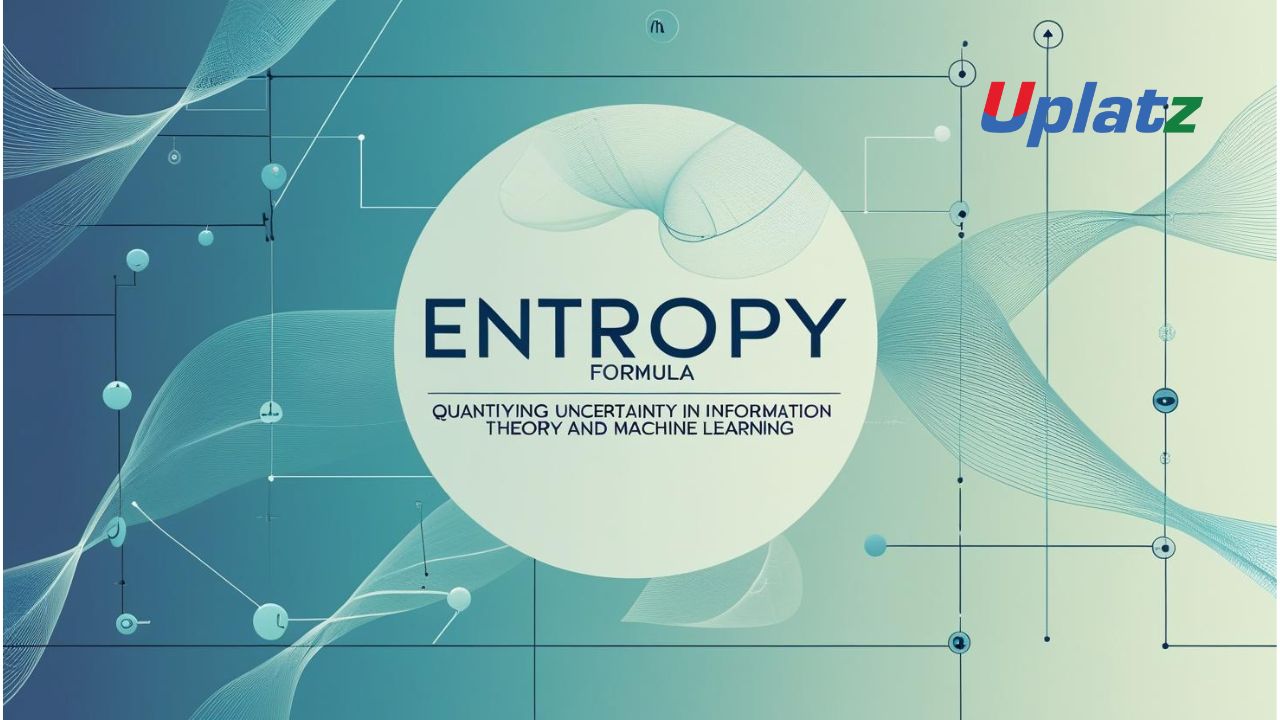 🔹 Short Description:
🔹 Short Description:
Entropy is a core concept in information theory used to quantify the level of unpredictability or disorder in a system. In machine learning, it plays a pivotal role in building decision trees and understanding information gain.
🔹 Description (Plain Text):
Entropy, in the context of information theory and machine learning, measures the amount of uncertainty or randomness in a dataset or system. Introduced by Claude Shannon, entropy is foundational to understanding how much information is needed to describe the state of a system. In machine learning, particularly in decision trees like ID3, C4.5, and CART, entropy helps determine how to split data in the most informative way.
📐 Formula
For a discrete random variable with outcomes x₁, x₂, …, xₙ, and their respective probabilities p₁, p₂, …, pₙ:
Entropy H(X) = − Σ [pᵢ * log₂(pᵢ)], for all i = 1 to n
Where:
- H(X) is the entropy of variable X
- pᵢ is the probability of class i
- log₂ is the logarithm to base 2
Entropy is measured in bits, representing the average number of bits needed to encode the information.
🧪 Example
Suppose you have a binary classification problem with 60% positive and 40% negative samples.
- p₁ = 0.6, p₂ = 0.4
- Entropy = − (0.6 * log₂(0.6) + 0.4 * log₂(0.4))
- Entropy ≈ − (0.6 * -0.737 + 0.4 * -1.322)
- Entropy ≈ 0.971 bits
This means the current state has a high degree of uncertainty or impurity.
Now, if all observations belonged to one class (say 100% positive), the entropy would be:
- H = − (1 * log₂(1)) = 0
Which indicates zero uncertainty, or a pure node in decision tree terms.
🧠 Key Interpretations
- High Entropy (close to 1): Data is very mixed (e.g., 50/50 class distribution), indicating high uncertainty.
- Low Entropy (close to 0): Data is pure (e.g., all one class), indicating low uncertainty.
Entropy helps machine learning algorithms identify how homogeneous or diverse a subset is. It’s a key ingredient in splitting criteria for decision trees.
📊 Real-World Applications
- Decision Tree Algorithms (ID3, C4.5, CART)
Used to determine the best attribute to split the data at each node, maximizing information gain (i.e., reduction in entropy). - Data Compression
Shannon Entropy predicts the minimum number of bits needed to encode data without loss. - Cryptography
Measures the randomness and unpredictability of keys and messages, critical for secure systems. - Natural Language Processing (NLP)
Entropy is used to assess how informative a word or sentence is. Rare words in language tend to carry more information (higher entropy). - Anomaly Detection
Systems with sudden changes in entropy may signal irregular patterns or outliers. - Image and Signal Processing
Used to quantify texture, noise, or randomness in visual and audio signals.
🔄 Entropy and Information Gain
Entropy alone doesn’t dictate decisions; it’s the change in entropy, or information gain, that guides decision-making in algorithms. If a split in a decision tree reduces entropy significantly, it provides high information gain and is preferred.
Information Gain = Entropy(before) – Weighted Entropy(after)
So, lower post-split entropy = better classification split.
🧩 Why It Matters
- Explains decision tree logic: Why a tree chooses a specific attribute to split
- Fundamental to data encoding: Helps with compression and efficient storage
- Measures predictability: Higher entropy = more uncertainty
Entropy is deeply tied to the second law of thermodynamics, making it one of the few concepts that crosses boundaries between physics, computer science, and statistics.
⚠️ Limitations of Entropy
- Sensitive to class imbalance: May give misleading impurity in highly skewed datasets
- Computational cost: Slightly more expensive than Gini Index due to logarithmic computation
- Interpretation can vary depending on the logarithm base used (log₂ = bits, log₁₀ = digits)
Despite these challenges, entropy is often preferred for its theoretical foundation and interpretability.
📎 Summary
- Formula: H(X) = − Σ [pᵢ * log₂(pᵢ)]
- Use cases: Decision trees, NLP, cryptography, compression
- Best for: Measuring uncertainty and impurity in datasets
- Key Insight: Higher entropy means more disorder; lower entropy means clearer classification
Understanding entropy not only strengthens your grasp on ML algorithms like decision trees, but also gives insight into broader concepts of information, uncertainty, and order.
🔹 Meta Title:
Entropy Formula – Measuring Uncertainty for Decision Trees and Data Science
🔹 Meta Description:
Explore the Entropy formula in machine learning and information theory. Learn how entropy quantifies uncertainty, aids decision trees, and supports compression, cryptography, and NLP. A vital metric in data science.
